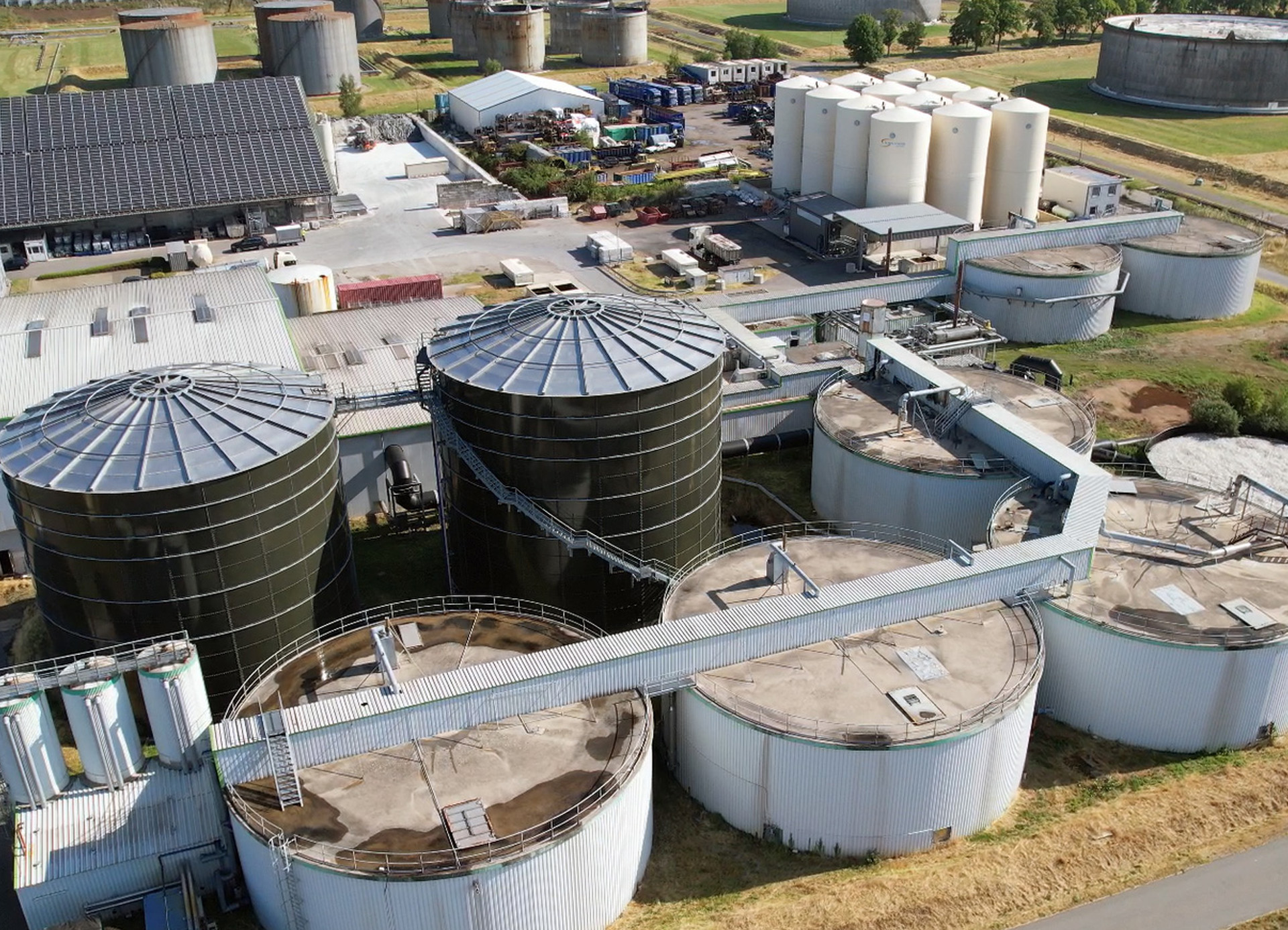
Biogas: Fit for a Future without EEG Feed-in Tariff
To prepare for post-EEG operation of its biogas plant, Bioenergie Hünxe GmbH has commissioned Hitachi Zosen Inova to carry out an extensive modernisation of the digestion system and install a membrane gas upgrading system for biomethane production. This will enable the biogas plant, which has been in operation since 2005, to continue running profitably without EEG feed-in tariffs. The retrofit of the plant, located just under 30 kilometres north of Duisburg, is due to be completed by mid-2025.
Hünxe, Germany. The North Rhine-Westphalian operating company Bioenergie Hünxe has commissioned the Swiss greentech group Hitachi Zosen Inova (HZI) with the conversion and expansion of an existing biogas plant. In operation since 2005 under the Renewable Energy Sources Act 2004 (EEG), after 20 years the plant in Hünxe, around 30 kilometres north of the city of Duisburg, will within the foreseeable future have to operate without feed-in tariffs. Against this backdrop, a viable concept for the ongoing long-term operation of the plant was sought. The HZI Group has drawn on its entire portfolio of biogas production and utilisation solutions to develop a compelling retrofit package to convert the plant from biogas generation to gas upgrading using membrane technology. The work will be carried out during plant operation with the shortest possible downtimes.
This will enable the plant to continue operating economically, fulfil political requirements for the increased use of organic fertiliser, reduce greenhouse gas emissions and create a further opportunity to substitute fossil natural gas.
Coordinated delivery of the project, which entails almost 20 individual measures, has already begun, and is due for completion by mid-2025. The gas feed-in plant should then be ready for operation and the grid connection established. The total volume of substrate processed to produce biogas will increase from 34,000 to around 62,000 tonnes per year.
Everything from slurry store to biomethane system from a single supplier
With various companies specialising in green gases under one roof, HZI will be able to implement most of the state-of-the-art measures involved in the modernisation on a one-stop basis. The work will include renewing the feeding technology for solid and liquid substrates, converting two fermentation residue stores into secondary digesters, restoring four main digesters (including replacing the submersible agitators with large-paddled, energy-efficient REMEX agitators), modifying the combined heat and power (CHP) units, and retrofitting a gas upgrading system.
In the future the CHP units will convert only enough biogas to cover the biogas plant’s heat requirements, with the majority used to produce biomethane. For this purpose, a membrane plant with a processing capacity of 800 Nm³/h of raw gas will be built, in which the carbon dioxide (CO2) contained in the biogas will be separated from the methane, which will be upgraded to natural gas quality and fed into the natural gas grid.
The right offering for big demand
Besides Hünxe, many of the biogas plants in operation have been delivered by biogas specialist Schmack. With the integration of Schmack, the HZI Group can now offer its customers, as well as operators of plants from other manufacturers, diverse options to make their plants fit for the future, on an integrated but versatile basis. “Every plant is different, which means each has different circumstances and different potential for the future,” says Manuel Götz, Managing Director of Schwandorf-based Hitachi Zosen Inova Schmack GmbH. “The differentiated expertise available within the HZI Group enables us to develop customised designs like the one for Hünxe. It doesn’t matter whether the plant is based on wet or dry digestion or whether the aim is to convert to a system for upgrading gas for feed-in or biofuel production – bio-LNG in combination with CO2liquefaction currently offers particularly interesting prospects for many operators.” Given the complex requirements of post-EEG operation, decarbonisation and the transformation of the energy system in Germany, these solutions are urgently required.
Download media release
Download Image – Fit for the future: The existing biogas plant in Hünxe is being extensively remodelled and expanded to include a gas upgrading system

